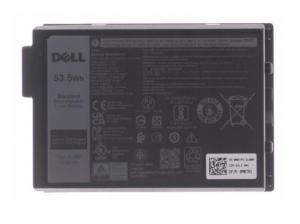przełączniki zarządzalne
Hewlett Packard Enterprise Przełącznik 5140 48G PoE+ 4SFP+ 1-slot HI SW R9L64A






Opis
Opis:Seria przełączników HPE FlexNetwork 5140 HI zapewnia wysoką dostępność i skalowalność w warstwie dostępowej średnich i dużych sieci kampusowych przedsiębiorstw.
Przełączniki te zapewniają szybką łączność i elastyczność dzięki łączom nadrzędnym 10GbE i portom combo. Obsługa modułów dodatkowych zwiększa pojemność dzięki dodatkowym funkcjom. Jest to bardzo ekonomiczny przełącznik z licznymi funkcjami, takimi jak DRNI i IRF dla zwiększenia odporności, funkcje QoS dla większej niezawodności, iNQA dla wydajności sieci i wglądu w pojemność w czasie rzeczywistym, sprzętowy MACsec dla kompleksowych szyfrowanych zabezpieczeń, oraz dwa redundantne zasilacze z energooszczędnym Ethernetem dla lepszego oszczędzania energii.
Obsługiwane protokoły i standardy:
- IEEE 802.1ad Q-in-Q
- IEEE 802.1ak Multiple Registration Protocol (MRP) and Multiple VLAN Registration Protocol (MVRP)
- IEEE 802.1AE MACsec
- IEEE 802.1AX2008 Link Aggregation
- IEEE 802.1D MAC Bridges
- IEEE 802.1p Priority
- IEEE 802.1Q (GVRP)
- IEEE 802.1Q VLANs
- IEEE 802.1s Multiple Spanning Trees
- IEEE 802.1v VLAN classification by Protocol and Port
- IEEE 802.1w Rapid Reconfiguration of Spanning Tree
- IEEE 802.1X PAE
- IEEE 802.3 Type 10BASE-T
- IEEE 802.3ab 1000BASE-T
- IEEE 802.3ac (VLAN Tagging Extension)
- IEEE 802.3ad Link Aggregation (LAG)
- IEEE 802.3ad Link Aggregation Control Protocol (LACP)
- IEEE 802.3ae 10-Gigabit Ethernet
- IEEE 802.3af Power over Ethernet
- IEEE 802.3at Power over Ethernet Plus
- IEEE 802.3az Energy Efficient Ethernet
- IEEE 802.3i 10BASE-T
- IEEE 802.3u 100BASE-X
- IEEE 802.3x Flow Control
- IEEE 802.3z 1000BASE-X RFC 768 UDP
- RFC 783 TFTP Protocol (revision 2)
- RFC 791 IP
- RFC 792 ICMP
- RFC 793 TCP
- RFC 826 ARP
- RFC 854 TELNET
- RFC 855 Telnet Option Specification
- RFC 894 IP over Ethernet
- RFC 925 Multi-LAN Address Resolution
- RFC 950 Internet Standard Subnetting Procedure
- RFC 951 BOOTP
- RFC 959 File Transfer Protocol (FTP)
- RFC 1027 Proxy ARP
- RFC 1042 IP Datagrams
- RFC 1058 RIPv1
- RFC 1071 Computing the Internet Checksum
- RFC 1166 IP Addresses
- RFC 1122 Requirements for Internet HostsCommunication Layers
- RFC 1123 Requirements for Internet Hosts
- RFC 1141 Incremental updating of the Internet checksum
- RFC 1191 Path MTU discovery
- RFC 1213 Management Information Base for Network Management of TCP/IP-based internets
- RFC 1256 ICMP Router Discovery Protocol (IRDP)
- RFC 1305 NTPv3
- RFC 1350 TFTP Protocol (revision 2)
- RFC 1519 CIDR
- RFC 1533 DHCP Options and BOOTP Vendor Extensions
- RFC 1542 BOOTP Extensions
- RFC 1591 DNS (client only)
- RFC 1643 Definitions of Managed Objects for the Ethernet-like Interface Types
- RFC 1723 RIP v2
- RFC 1812 IPv4 Routing
- RFC 1866 Hypertext Markup Language2.0
- RFC 1887 An Architecture for IPv6 Unicast Address Allocation
- RFC 1901 Introduction to Community-based SNMPv2
- RFC 1902-1907 SNMPv2
- RFC 2131 DHCP
- RFC 2236 IGMP Snooping
- RFC 2375 IPv6 Multicast Address Assignments
- RFC 2462 IPv6 Stateless Address Autoconfiguration
- RFC 2474 Definition of the Differentiated Services Field (DS Field) in the IPv4 and IPv6 Headers
- RFC 2475 Architecture for Differentiated Services
- RFC 2597 Assured Forwarding PHB Group
- RFC 2616 Hypertext Transfer ProtocolHTTP/1.1
- RFC 2644 Directed Broadcast Control
- RFC 2665 Definitions of Managed Objects for the Ethernet-like Interface Types
- RFC 2668 Definitions of Managed Objects for
- IEEE 802.3 Medium Attachment Units (MAUs)
- RFC 2711 IPv6 Router Alert Option
- RFC 2865 Remote Authentication Dial In User Service (RADIUS)
- RFC 2866 RADIUS Accounting
- RFC 2868 RADIUS Attributes for Tunnel Protocol Support
- RFC 3046 DHCP Relay Agent Information Option
- RFC 3246 Expedited Forwarding PHB
- RFC 3410 Applicability Statements for SNMP
- RFC 3414 User-based Security Model (USM) for version 3 of the Simple Network Management Protocol (SNMPv3)
- RFC 3415 View-based Access Control Model (VACM) for the Simple Network Management Protocol (SNMP)
- RFC 3416 Protocol Operations for SNMP
- RFC 3417 Transport Mappings for the Simple Network Management Protocol (SNMP)
- RFC 3418 Management Information Base (MIB) for the Simple Network Management
- RFC 3484 Default Address Selection for Internet Protocol version 6 (IPv6)
- RFC 3493 Basic Socket Interface Extensions for IPv6
- RFC 3542 Advanced Sockets Application Program Interface (API) for IPv6
- RFC 3576 Ext to RADIUS (CoA only)
- RFC 3580 IEEE 802.1X Remote Authentication Dial In User Service (RADIUS) Usage Guidelines
- RFC 3587 IPv6 Global Unicast Address Format
- RFC 3596 DNS Extensions to Support IP Version 6
- RFC 3704 Unicast Reverse Path Forwarding (URPF)
- RFC 4113 Management Information Base for the User Datagram Protocol (UDP)
- RFC 4213 Basic IPv6 Transition Mechanisms
- RFC 4250 The Secure Shell (SSH) Protocol Assigned Numbers
- RFC 4251 The Secure Shell (SSH) Protocol Architecture
- RFC 4252 The Secure Shell (SSH) Authentication Protocol
- RFC 4253 The Secure Shell (SSH) Transport Layer Protocol
- RFC 4254 The Secure Shell (SSH) Connection Protocol
- RFC 4291 IP Version 6 Addressing Architecture
- RFC 4443 Internet Control Message Protocol (ICMPv6) for the Internet Protocol Version 6 (IPv6) Specification
- RFC 4541 Considerations for Internet Group Management Protocol (IGMP) and Multicast Listener Discovery (MLD)
- Snooping Switches
- RFC 4594 Configuration Guidelines for DiffServ Service Classes
- RFC 4675 RADIUS VLAN & Priority
QoS:
- RFC 2474 DS Field in the IPv4 and IPv6 Headers
- RFC 3260 New Terminology and Clarifications for DiffServ
Bezpieczeństwo:
- IEEE 802.1X Port Based Network Access Control
- RFC 1492 TACACS+
- RFC 2138 RADIUS Authentication
- RFC 2139 RADIUS Accounting
- RFC 2865 RADIUS Authentication
- RFC 2866 RADIUS Accounting
- RFC 3260 New Terminology and Clarifications for DiffServ
- RFC 4716 SSH Public Key File Format
- Secure Sockets Layer (SSL) SSHv2 Secure Shell
Zarządzanie, monitorowanie, konfiguracja:
- Remote configuration and management: Enables configuration and management through a secure CLI located on a remote device
- Manager and operator privilege levels: Provides read-only (operator) and read/write (manager) access on CLI management interfaces
- Command authorization:Leverages RADIUS/HWTACACS to link a custom list of CLI commands to an individual network administrator's login; also provides an audit trail
- Multiple configuration files: Stores easily to the flash image
- Complete session logging: Provides detailed information for problem identification and resolution
- Remote monitoring (RMON): Uses standard SNMP to monitor essential network functions; supports events, alarm, history, and statistics group plus a private alarm extension group
- IEEE 802.1AB Link Layer Discovery Protocol (LLDP): Advertises and receives management information from adjacent devices on a network, facilitating easy mapping by network management applications
- sFlow (RFC 3176): Provides scalable ASIC-based wirespeed network monitoring and accounting with no impact on network performance; this allows network operators to gather a variety of sophisticated network statistics and information for capacity planning and real-time network monitoring purposes
- Management VLAN: Segments traffic to and from management interfaces, including CLI/Telnet and SNMP
Funkcje L3:
- Address Resolution Protocol (ARP): Determines the MAC address of another IP host in the same subnet; supports static ARPs; gratuitous ARP allows detection of duplicate IP addresses; proxy ARP allows normal ARP operation between subnets or when subnets are separated by a Layer 2 network
- Dynamic Host Configuration Protocol (DHCP): Simplifies the management of large IP networks; supports client; DHCP Relay enables DHCP operation across subnets
- Loopback interface address: Defines an address that can always be reachable, improving diagnostic capability
- User Datagram Protocol (UDP) helper function: Allows UDP broadcasts to be directed across router interfaces to specific IP unicast or subnet broadcast addresses and prevents server spoofing for UDP services such as DHCP
- Route maps: Provide more control during route redistribution; allow filtering and altering of route metrics
- DHCP server: Centralizes and reduces the cost of IPv4 address management
- Policy Based Routing" Provides a mechanism for indicating and executing forwarding/routing of data packets based on the policies defined by the network administrator
Zasilanie:
100240 VAC, znamionowe (90264 VAC, maks.) -48 do -60 VDC, znamionowe (-36 do -72 VDC, max) (w zależności od wybranego źródła zasilania)
Wymiary:
440.0 x 460.0 x 43.6 mm
Parametry
| Podstawowe | |
| Liczba portów SFP28: | 1 |
| Liczba portów SFP56: | Brak |
| Liczba portów SFP+: | Brak |
| Liczba portów PoE (PoE + PoE+): | Brak |
| Liczba portów COMBO: | Brak |
| Liczba portów 10/100/1000/2500 Mbps: | Brak |
| Liczba portów PoE+: | Brak |
| Liczba portów 10/100 Mbps: | Brak |
| Liczba portów 10/100/1000 Mbps: | Brak |
| Liczba portów SFP: | Brak |
| Liczba portów QSFP+: | Brak |
| Liczba portów 10Gb: | Brak |
| Architektura sieci (switche): | GigabitEthernet |
| Warstwa przełączania (switche): | L2L3 |
| Typ obudowy: | Mini Tower |
| Wentylator (switche): | Nie |
| Możliwość łączenia w stos: | Nie |
| Port konsoli: | Nie |
| Obsługa ramek Jumbo: | Nie |
| Tryb przekazywania: | Store-and-forward |
| Zastosowanie (switche): | Średnie i duże firmy (powyżej 16 portów) |
| Zasilacz (switche): | Wewnętrzny |
| Klasa przełącznika: | Zarządzalny |















